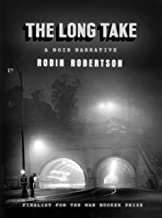Crown of Blood by Nicola Tallis is, effectively, a political biography of Queen Jane, the first woman to be named as the occupant of the English throne and the only occupant never to have been crowned. Born of the Tudor line, Jane's claim to the English throne was significant. Her grandmother had been Mary Tudor, youngest daughter of Henry VII and she was thus a full cousin to the King, Edward VI.
In the mid-16th century, England was riven by political difference driven by religious and ideological conflict and was further plunged into confusion by the untimely death of Edward VI, the only son of Henry VIII. But Henry's two daughters, Mary and Elizabeth, had by some, including at one stage their own father, been branded as illegitimate, and therefore ineligible to inherit the throne. Confusion still surrounds exactly what Henry VIII, himself, thought of their individual succession rights. After the birth of a son, Edward, the matter was irrelevant, in any case.
Edward, a staunch Protestant, above all else wanted his own version of the Christian faith to prevail. He was a teenager when he started to ail, and his thoughts were turned reluctantly towards his succession and the continuance of the religious revolution he had furthered was uppermost in his prioritied. Thus he nominated Jane Grey as his successor, the move calculated both to promote his Protestantism and to discredit his half-sisters, Mary and Elizabeth, one because she was a Catholic and the other because her mother had, it was alleged, humiliated his father through acts of infidelity. In his eyes neither was worthy of the crown. Lady Jane Grey, on the other hand, was a pious Protestant, from a good family, of Royal Blood and of serious, even learned disposition. Ostensibly, she even had the support of several nights and even a bishop, plus that of her ambitious family in their castle. These could have been the perfect circumstances to promote her advancement to queen. Amongst her backers, however, it was ambition and self-interest that unfortunately underpinned support for the teenage Lady Jane and, as a woman, she was powerless either to influence or counteract that scheming.
Thus, she was married to one Guildford to make a friendly alliance between powerful families, declared queen and admitted to the tower of London for her own safety. Mary, however, had popular support by virtue of her having been King Henry's first daughter and a military skirmish confirmed her greater and now pragmatic claim to the throne. Jane Grey’s protection in the tower thus became imprisonment under the influence of a victorious Mary. Jane’s supporters largely disowned her, while those who didn't lost their heads and their innards. Jane herself was tried, found guilty of treason and beheaded. Mary showed clemency in deciding not to burn her cousin.
What is so upsetting about this story is its apparent
inevitability. Jane's major problem, it seemed, was that she was a woman. She
had no rights. She was a mere pawn, moved at will by others and advanced for
their own gain. Her story is this is not a tragedy, but a conspiracy. She was
party to that conspiracy, but she was also trapped and probably could not have
extricated herself from its vice, even if she had tried harder to do so. Like
women of her age, she was chattel, so much meat to be haggled over by a bunch
of property-owning, self-promoting barrow-boys looking for a profit.
The raw and calculated callousness exhibited by anyone in the position of power or influence over the life or status of Lady Jane Grey is more than merely shocking. Its consequences are genuinely upsetting. Here was a young woman used and then discarded when her attributes did not profit those who backed her. The example this presents reminds us that there were many others, who were not royal, who suffered similar but unrecorded fates.
Crown of Blood by Nicola Tallis examines this history in fine and accurate detail. This is a serious study of the political and legal dimensions of the case. But is also a biography, and the delves as deeply as sources allow into the background, development and character of Lady Jane Grey. The author offers a truly historical account, researching sources and judging their veracity or otherwise. Even in history, it is always easier to make it up, to deliver what current values assume. But that is fiction, not history, and Nicola Tallis’s book always inhabits what can be justified.
Perhaps we should remind ourselves that Lady Jane Grey was also known as Jane Dudley, because that would remind us of the family’s status just a few years later when Robert Dudley became the favourite of Elizabeth I. Indeed, part of the case that was eventually levelled against Robert Dudley referred back to the treasonous activities of the family in relation to Lady Jane’s advancement to queen.
As is often the case in history, the rich and powerful
can bathe their hands in blood, knowing that the consequences will never come
their way. Reading details of the callous intrigue, the self-promotion and
sheer selfishness that surrounded the elevation and then decapitation of this
young woman reminds us of how much, or indeed how little, has changed since the
sixteenth century.










